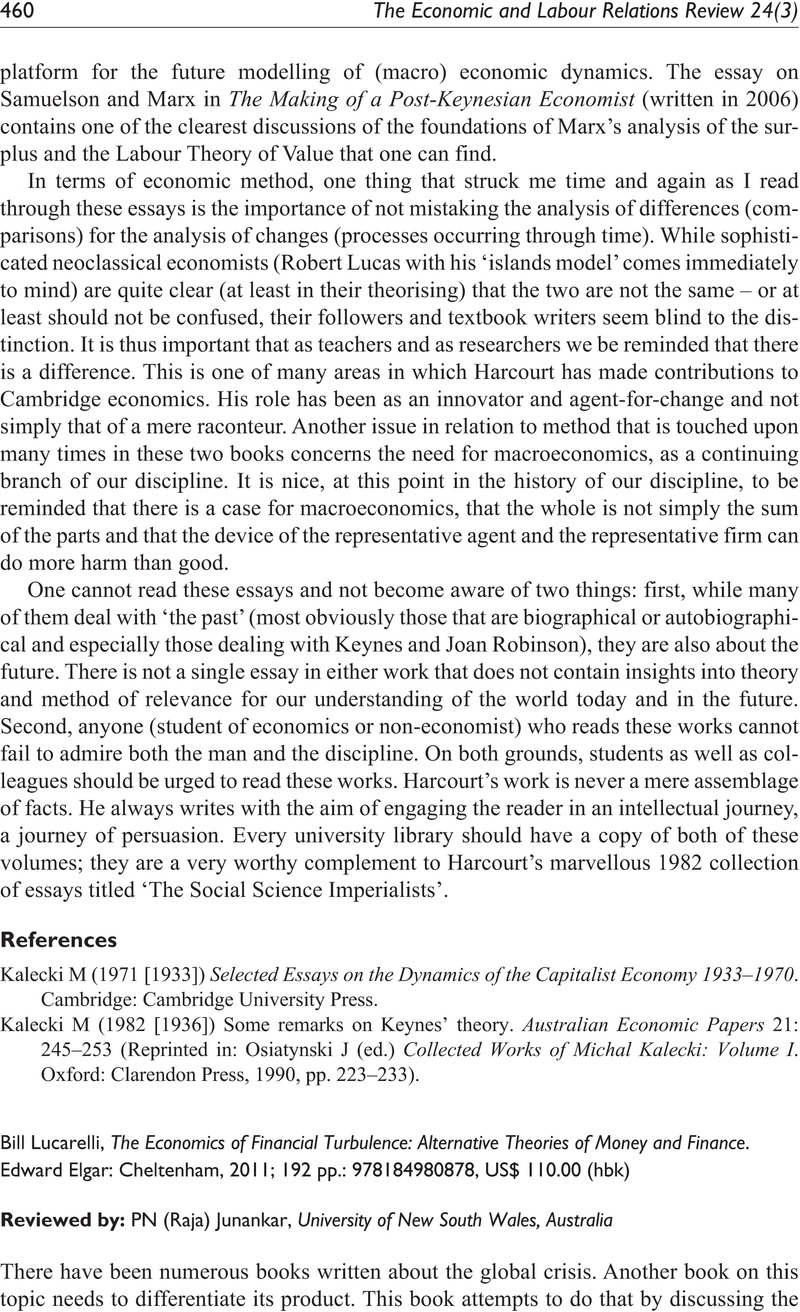No CrossRef data available.
Article contents
Bill Lucarelli, The Economics of Financial Turbulence: Alternative Theories of Money and Finance. Edward Elgar: Cheltenham, 2011; 192 pp.: 978184980878, US$ 110.00 (hbk)
Review products
Published online by Cambridge University Press: 01 January 2023
Abstract

- Type
- Book Reviews
- Information
- The Economic and Labour Relations Review , Volume 24 , Issue 3: Symposium – Precarious work: Economic, sociological and political perspectives , September 2013 , pp. 460 - 463
- Copyright
- Copyright © The Author(s) 2013


